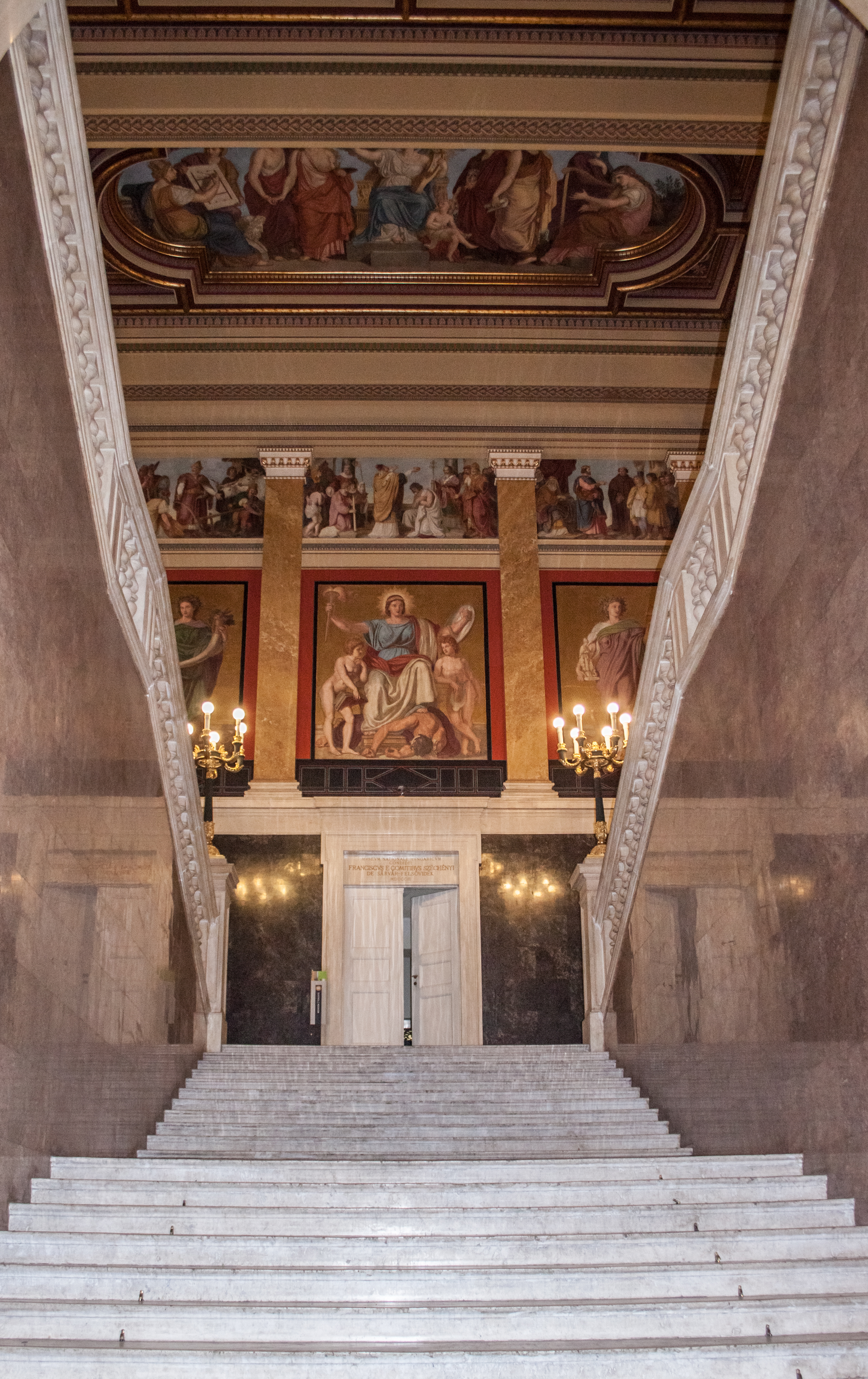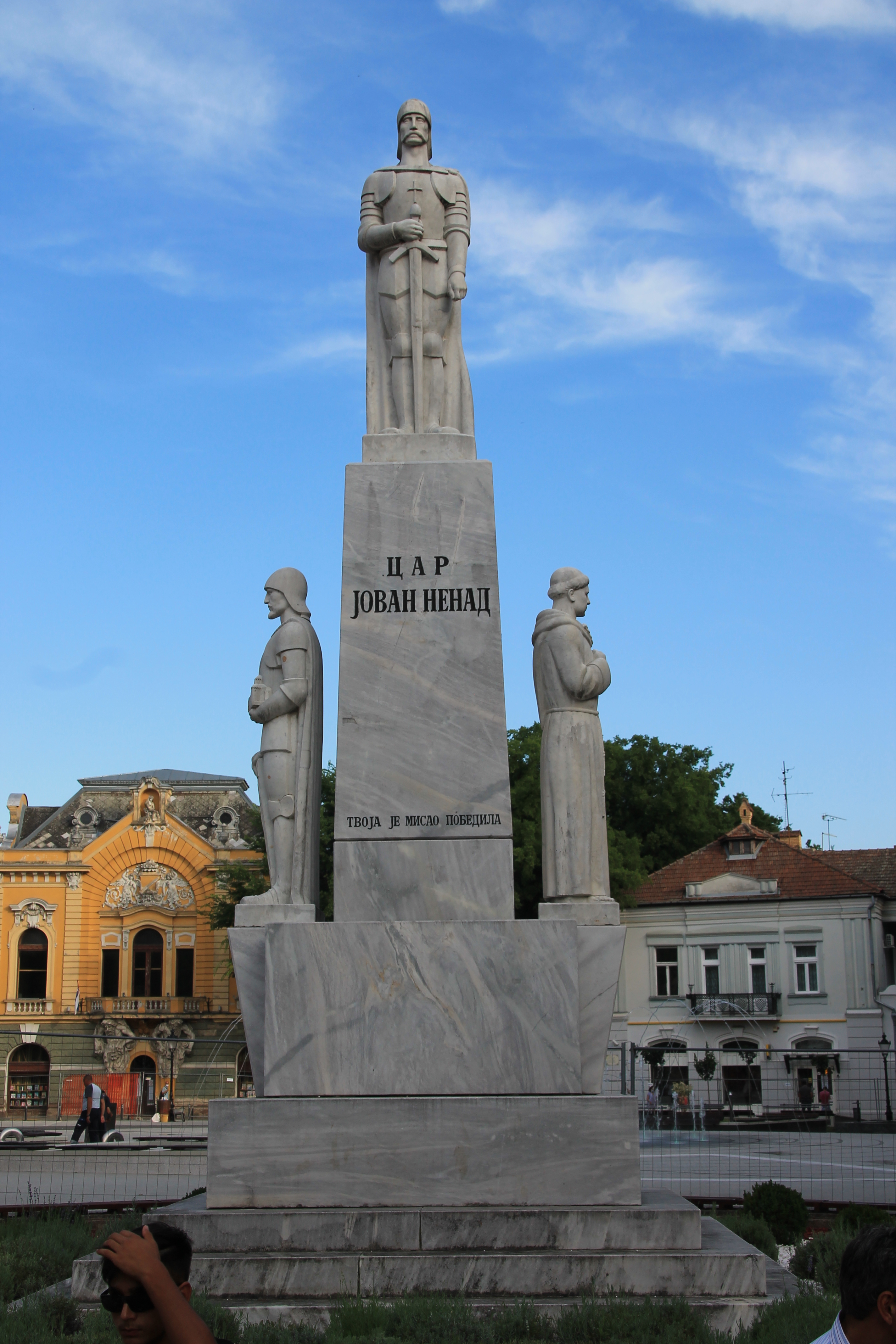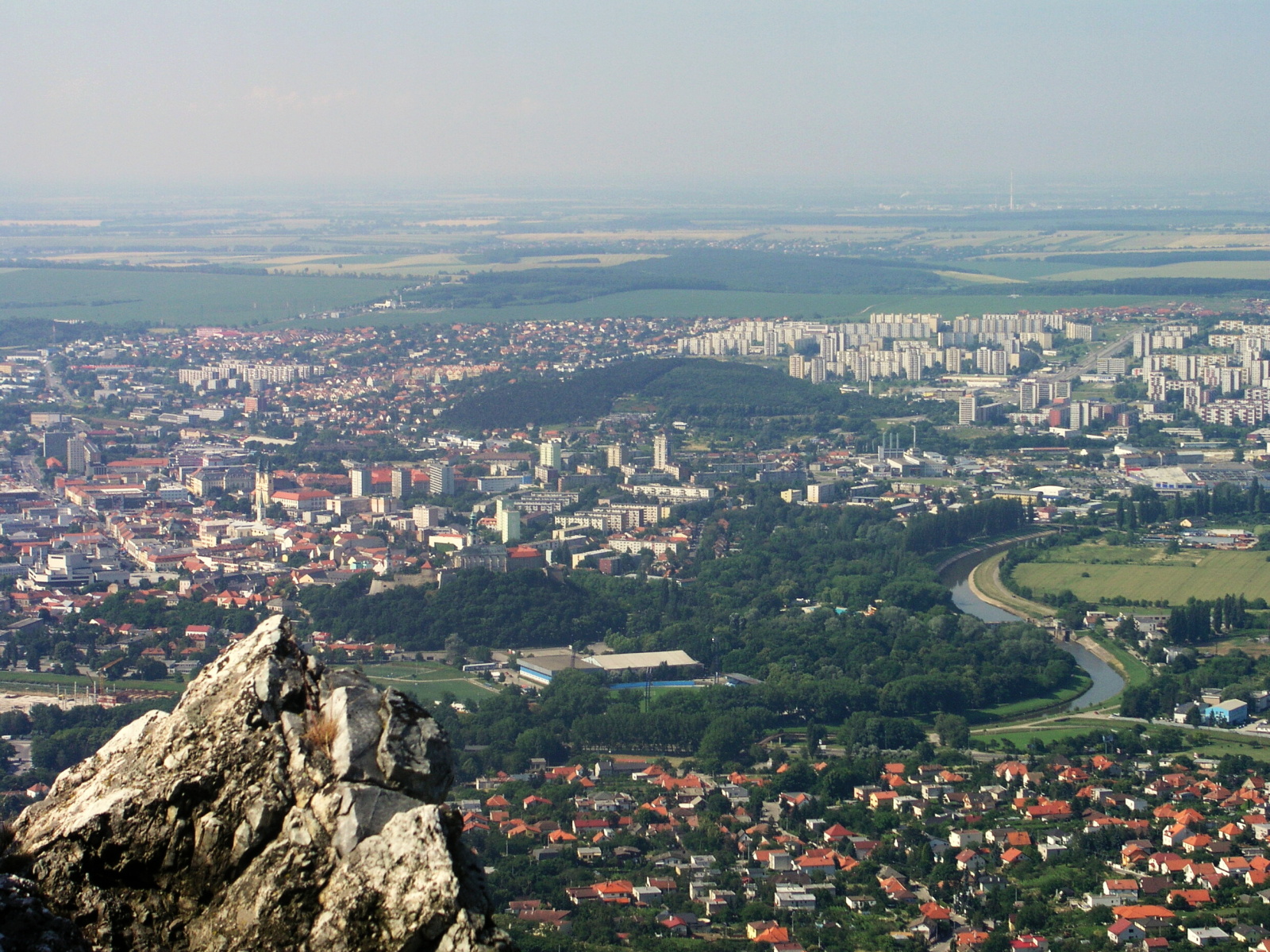|
Körmendy
Körmendy in the Hungarian language, due to its form and implied meaning, is understood to be a family name. Literally it means: a person or family of or originating or associated with the place called Körmend, now one of the smaller townships in Western Hungary, near the Austrian border. It is evident in some public records that the same family name may have been spelled "Körmendi" as compared to "Körmendy". It is generally understood in the Hungarian tradition that the use of the form "Körmendy" is an entitlement of some sort due to the formerly official title of nobility, received as granted in a traditional European meaning and process. The "Körmendi" name, form or usage, may mean in some cases, simply a spelling variation due to whatever reasons, but in some other cases "Körmendi" may be just an adopted name, not entitled to the "Körmendy" form of spelling. There seem to exist many people in the world with these family names, however to this writer at this point it may ... [...More Info...] [...Related Items...] OR: [Wikipedia] [Google] [Baidu] |
Hungarian Language
Hungarian, or Magyar (, ), is an Ugric language of the Uralic language family spoken in Hungary and parts of several neighboring countries. It is the official language of Hungary and one of the 24 official languages of the European Union. Outside Hungary, it is also spoken by Hungarians, Hungarian communities in southern Slovakia, western Ukraine (Zakarpattia Oblast, Transcarpathia), central and western Romania (Transylvania), northern Serbia (Vojvodina), northern Croatia, northeastern Slovenia (Prekmurje), and eastern Austria (Burgenland). It is also spoken by Hungarian diaspora communities worldwide, especially in North America (particularly the Hungarian Americans, United States and Canada) and Israel. With 14 million speakers, it is the Uralic family's most widely spoken language. Classification Hungarian is a member of the Uralic language family. Linguistic connections between Hungarian and other Uralic languages were noticed in the 1670s, and the family's existenc ... [...More Info...] [...Related Items...] OR: [Wikipedia] [Google] [Baidu] |
Hungarian Kingdom
The Kingdom of Hungary was a monarchy in Central Europe that existed for nearly a millennium, from 1000 to 1946 and was a key part of the Habsburg monarchy from 1526-1918. The Principality of Hungary emerged as a Christian kingdom upon the Coronation of the Hungarian monarch, coronation of the first king Stephen I of Hungary, Stephen I at Esztergom around the year 1000;Kristó Gyula – Barta János – Gergely Jenő: Magyarország története előidőktől 2000-ig (History of Hungary from the prehistory to 2000), Pannonica Kiadó, Budapest, 2002, , pp. 37, 113, 678 ("Magyarország a 12. század második felére jelentős európai tényezővé, középhatalommá vált."/"By the 12th century Hungary became an important European factor, became a middle power.", "A Nyugat részévé vált Magyarország.../Hungary became part of the West"), pp. 616–644 his family (the Árpád dynasty) led the monarchy for 300 years. By the 12th century, the kingdom became a European power. Du ... [...More Info...] [...Related Items...] OR: [Wikipedia] [Google] [Baidu] |
Győr
Győr ( , ; ; names of European cities in different languages: E-H#G, names in other languages) is the main city of northwest Hungary, the capital of Győr-Moson-Sopron County and Western Transdanubia, Western Transdanubia region, and – halfway between Budapest and Vienna – situated on one of the important roads of Central Europe. It is the sixth largest city in Hungary, and one of its seven main regional centres. The city has City with county rights, county rights. History The area along the Danube River has been inhabited by varying cultures since ancient times. The first large settlement dates back to the 5th century BCE; the inhabitants were Celts. They called the town ''Ara Bona'' "Good altar", later contracted to ''Arrabona'', a name which was used until the eighth century. Its shortened form is still used as the German (''Raab'') and Slovak (''Ráb'') names of the city. Roman merchants moved to Arrabona during the 1st century BCE. Around 10 CE, the Roman army occupied ... [...More Info...] [...Related Items...] OR: [Wikipedia] [Google] [Baidu] |
Ottoman Empire
The Ottoman Empire (), also called the Turkish Empire, was an empire, imperial realm that controlled much of Southeast Europe, West Asia, and North Africa from the 14th to early 20th centuries; it also controlled parts of southeastern Central Europe, between the early 16th and early 18th centuries. The empire emerged from a Anatolian beyliks, ''beylik'', or principality, founded in northwestern Anatolia in by the Turkoman (ethnonym), Turkoman tribal leader Osman I. His successors Ottoman wars in Europe, conquered much of Anatolia and expanded into the Balkans by the mid-14th century, transforming their petty kingdom into a transcontinental empire. The Ottomans ended the Byzantine Empire with the Fall of Constantinople, conquest of Constantinople in 1453 by Mehmed II. With its capital at History of Istanbul#Ottoman Empire, Constantinople (modern-day Istanbul) and control over a significant portion of the Mediterranean Basin, the Ottoman Empire was at the centre of interacti ... [...More Info...] [...Related Items...] OR: [Wikipedia] [Google] [Baidu] |
Hungarian National Museum
The Hungarian National Museum (, ) was founded in 1802 and is the national museum for the history, art, and archaeology of Hungary, including areas not within Hungary's modern borders, such as Transylvania; it is separate to the collection of international art in the Hungarian National Gallery. The museum is in Budapest VIII in a Neoclassical building, purpose-built during 1837–47 by the architect Mihály Pollack. History The Hungarian National Museum traces its foundation to 1802, when Count Ferenc Széchényi set up the National Széchényi Library. This would then be followed a year later by the donating of a mineral collection by Széchényi's wife. This led to the creation of the Hungarian National Museum as a general history and natural history museum, beyond being simply a library. In 1807, the Hungarian National Parliament passed legislation on the new institution and asked the nation to help donate to the museum. The Hungarian Parliament of 1832–1834 helped ... [...More Info...] [...Related Items...] OR: [Wikipedia] [Google] [Baidu] |
Serbia
, image_flag = Flag of Serbia.svg , national_motto = , image_coat = Coat of arms of Serbia.svg , national_anthem = () , image_map = , map_caption = Location of Serbia (green) and the claimed but uncontrolled territory of Kosovo (light green) in Europe (dark grey) , image_map2 = , capital = Belgrade , coordinates = , largest_city = capital , official_languages = Serbian language, Serbian , ethnic_groups = , ethnic_groups_year = 2022 , religion = , religion_year = 2022 , demonym = Serbs, Serbian , government_type = Unitary parliamentary republic , leader_title1 = President of Serbia, President , leader_name1 = Aleksandar Vučić , leader_title2 = Prime Minister of Serbia, Prime Minister , leader_name2 = Đuro Macut , leader_title3 = Pres ... [...More Info...] [...Related Items...] OR: [Wikipedia] [Google] [Baidu] |
Szabadka
Subotica (, ; , , ) is a city in Central Europe and the administrative center of the North Bačka District in the autonomous province of Vojvodina, Serbia. Formerly the largest city of Vojvodina region, contemporary Subotica is now the second largest city in the province, following the city of Novi Sad. According to the 2022 census, the urban area of the city (including adjacent settlement of Palić) has a population of 94,228, and the population of metro area (the administrative area of the city) stands at 123,952 people. Name The name of the city has changed frequently over time.History of Subotica Retrieved 8 September 2022. The earliest known written name of the city was ''Zabotka'' or ''Zabatka'', which dates from 1391. It is the origin of the current Hungarian name for the city ''"Szabad ... [...More Info...] [...Related Items...] OR: [Wikipedia] [Google] [Baidu] |
Bács-Bodrog County
Bács-Bodrog County (, , ) was an administrative county () of the Kingdom of Hungary from 1802 to 1920. Most of its territory is currently part of Serbia, while a smaller part belongs to Hungary. The capital of the county was Zombor (present-day Sombor). Name The county was named after two older counties: Bács and Bodrog. Bács county was named after the town of Bács (present-day Bač, Serbia, Bač) and Bodrog county was named after the historical town of Bodrog (which was located near present-day Bački Monoštor), which itself was named after the Slavic tribe of Abodrites (or Bodrići in Slavic) that inhabited this area in the Middle Ages. The Abodrites were originally from northwest Germany, but after their homeland fell to the Germans, some had moved to Pannonia. Geography Bács-Bodrog county shared borders with several other counties of the Kingdom of Hungary: Baranya County (former), Baranya, Pest-Pilis-Solt-Kiskun County, Pest-Pilis-Solt-Kiskun, Csongrád County (forme ... [...More Info...] [...Related Items...] OR: [Wikipedia] [Google] [Baidu] |
Slovakia
Slovakia, officially the Slovak Republic, is a landlocked country in Central Europe. It is bordered by Poland to the north, Ukraine to the east, Hungary to the south, Austria to the west, and the Czech Republic to the northwest. Slovakia's mostly mountainous territory spans about , hosting a population exceeding 5.4 million. The capital and largest city is Bratislava, while the second largest city is Košice. The Slavs arrived in the territory of the present-day Slovakia in the 5th and 6th centuries. From the late 6th century, parts of modern Slovakia were incorporated into the Pannonian Avars, Avar Khaghanate. In the 7th century, the Slavs played a significant role in the creation of Samo's Empire. When the Avar Khaghanate dissolved in the 9th century, the Slavs established the Principality of Nitra before it was annexed by the Great Moravia, Principality of Moravia, which later became Great Moravia. When Great Moravia fell in the 10th century, the territory was integrated i ... [...More Info...] [...Related Items...] OR: [Wikipedia] [Google] [Baidu] |
Nyitra
Nitra (; also known by other alternative names) is a city in western Slovakia, situated at the foot of Zobor Mountain in the valley of the river Nitra. It is located 95 km east of Bratislava. With a population of about 78,353, it is the fifth largest city in Slovakia. Nitra is also one of the oldest cities in Slovakia; it was the political center of the Principality of Nitra. Today, it is a seat of a ''kraj'' (Nitra Region), and an ''okres'' (Nitra District). Etymology The first mention of Nitra dates back to the 9th century. The name of the city is derived from the Nitra River. The name is Indo-European, but the question of its pre-Slavic or Slavic origin has not been satisfactorily answered. Nitra might be derived from the old Indo-European root ''neit-'', ''nit-'' 'to cut' or 'to burn' using the derivational element ''-r-'' (see also slash-and-burn agricultural technique). The same root is still present in the Slovak verb ''nietiť'' 'to make a fire', but also in othe ... [...More Info...] [...Related Items...] OR: [Wikipedia] [Google] [Baidu] |







